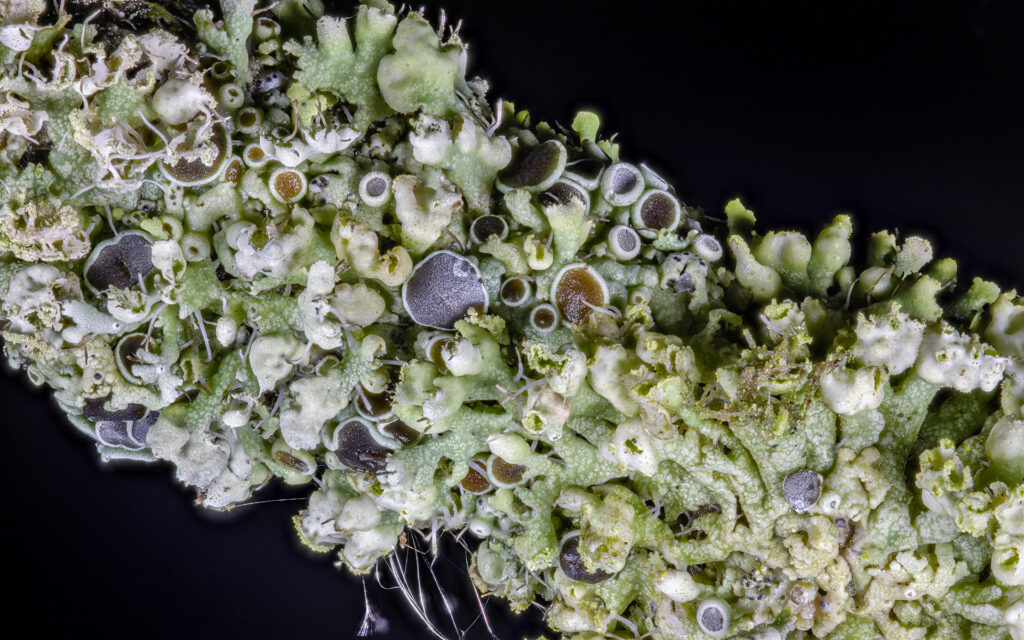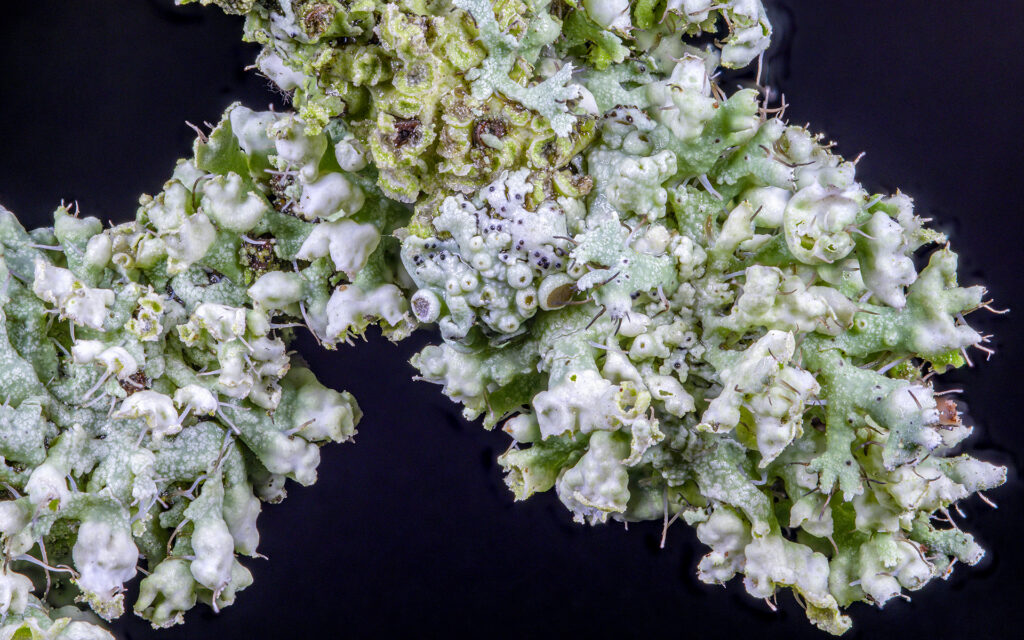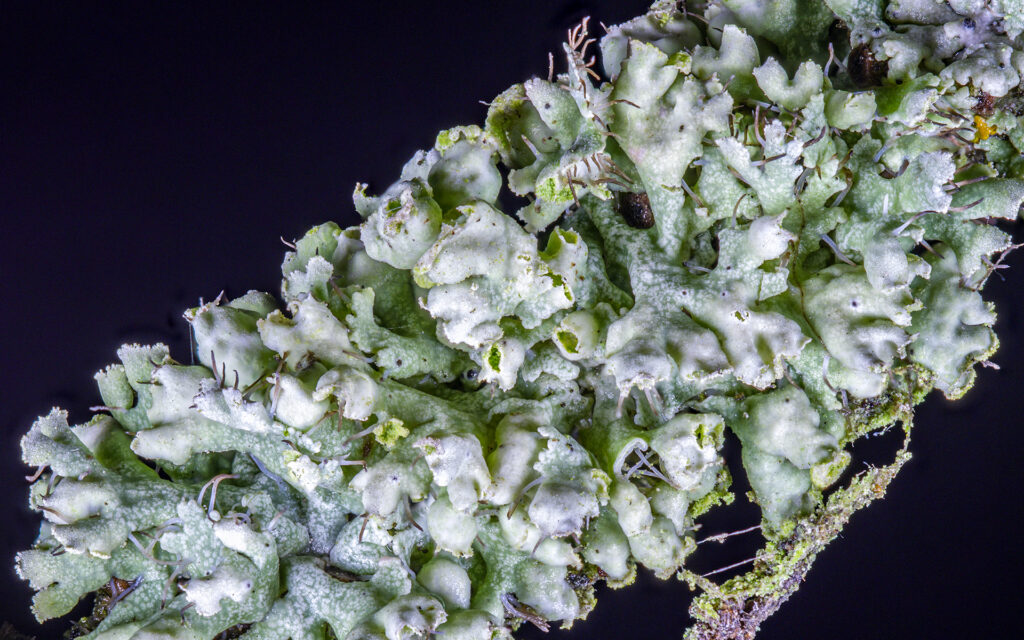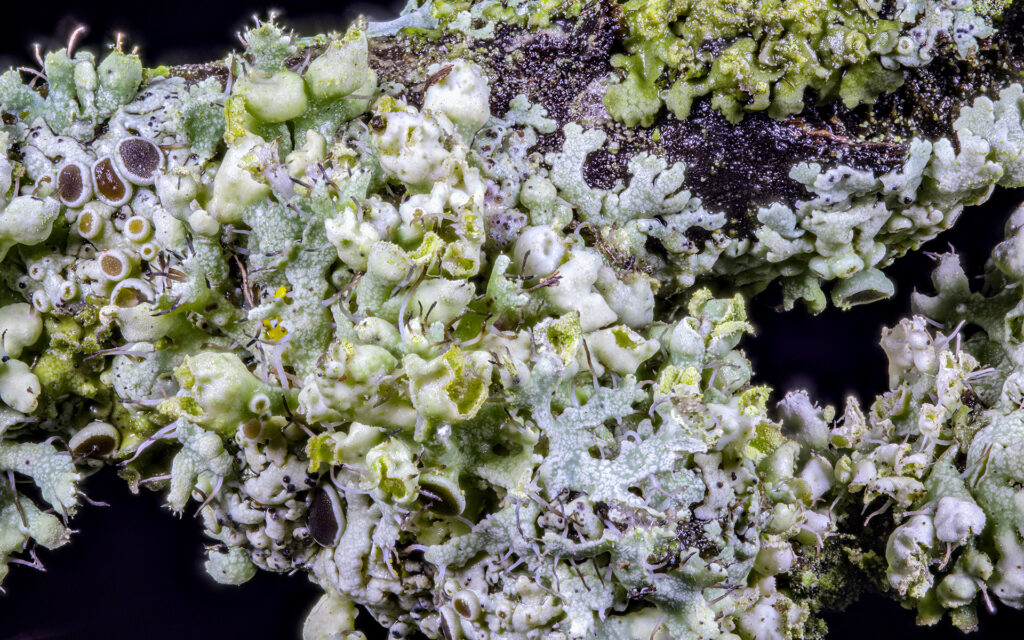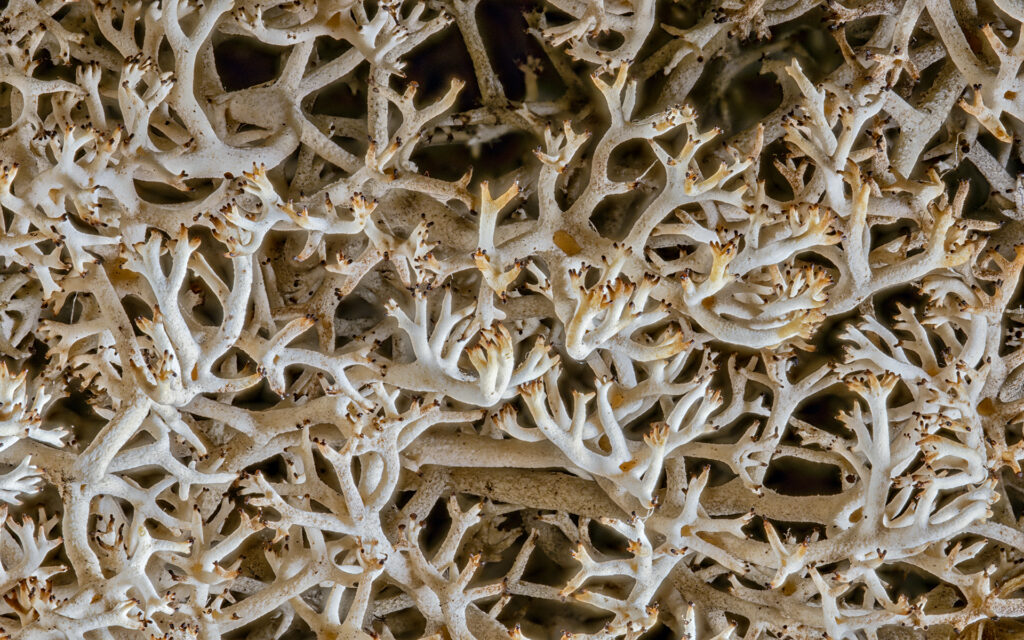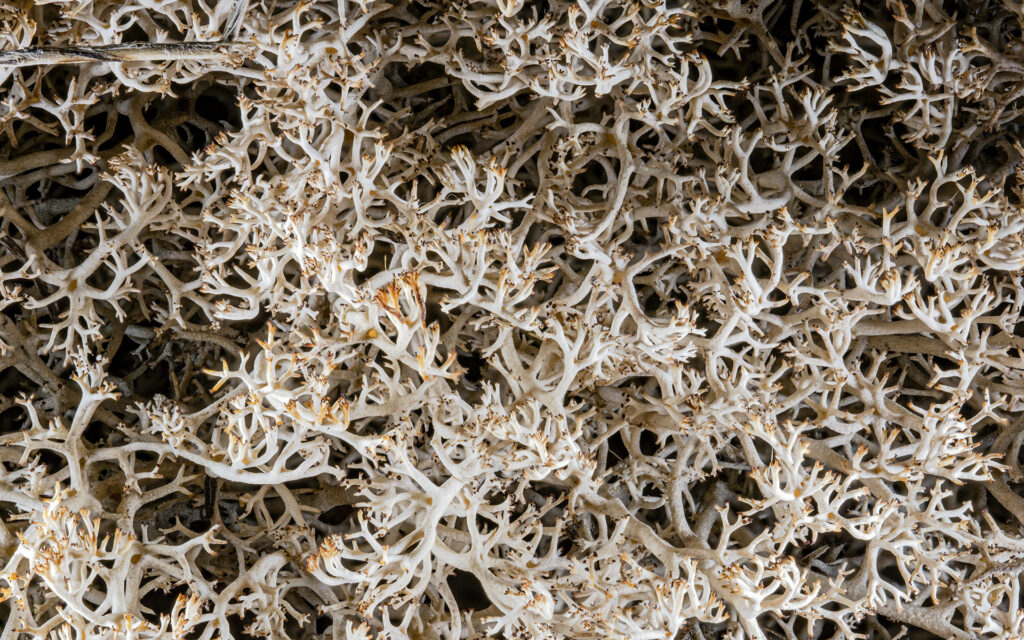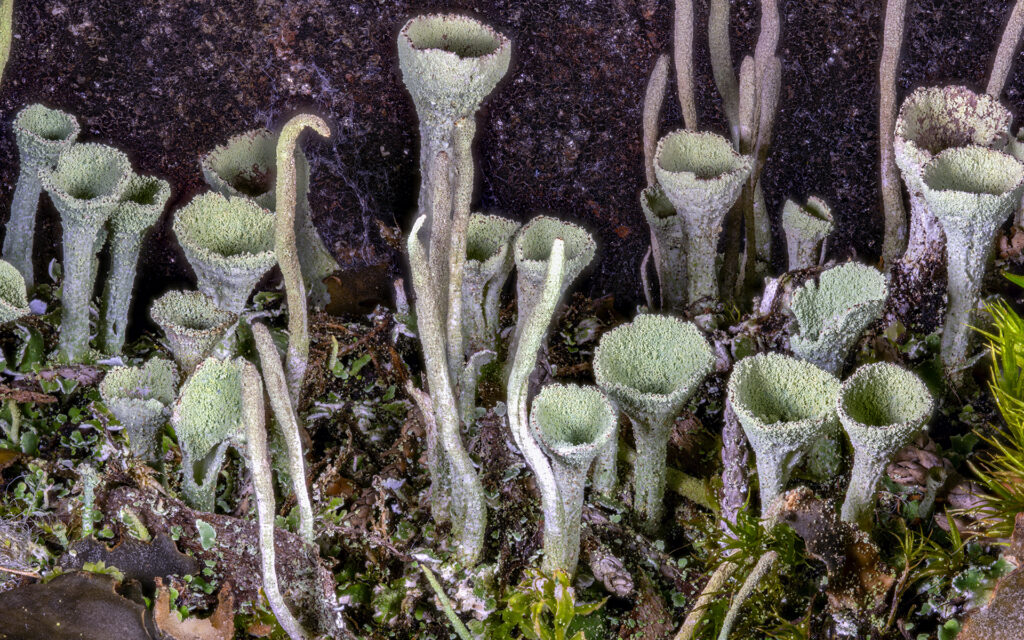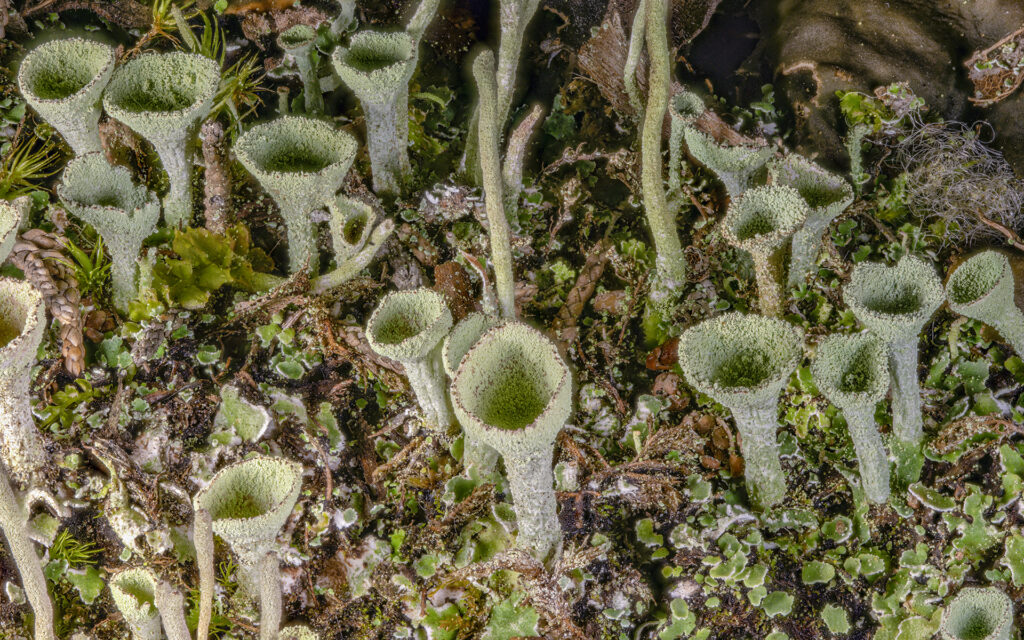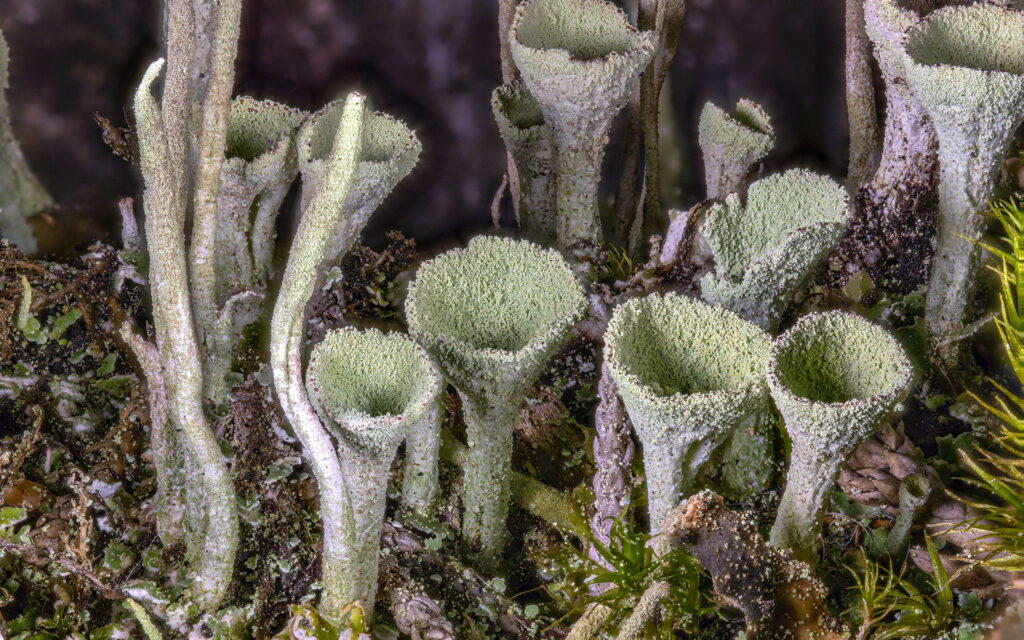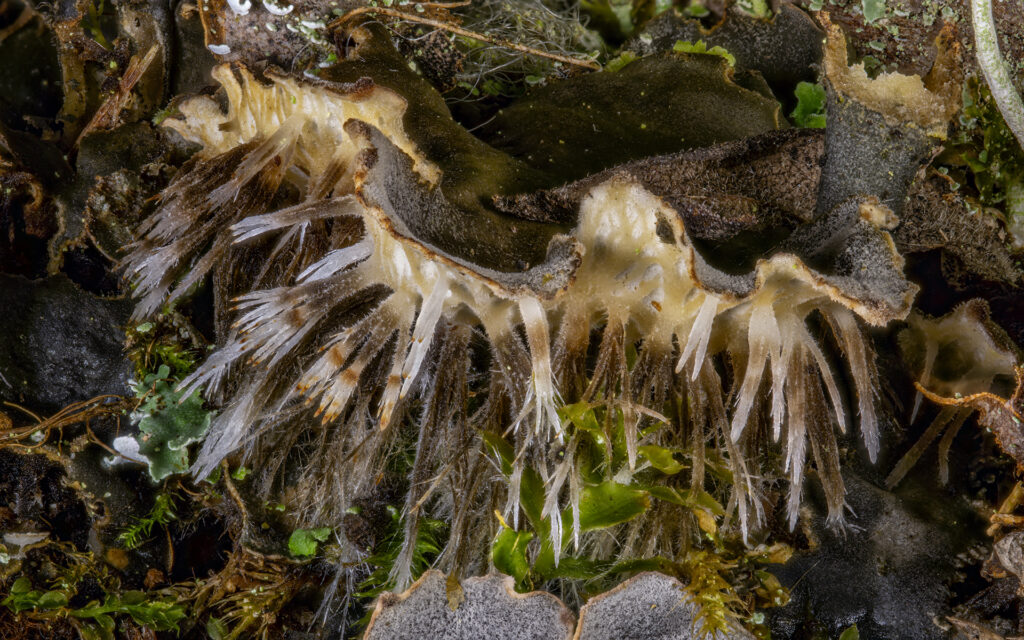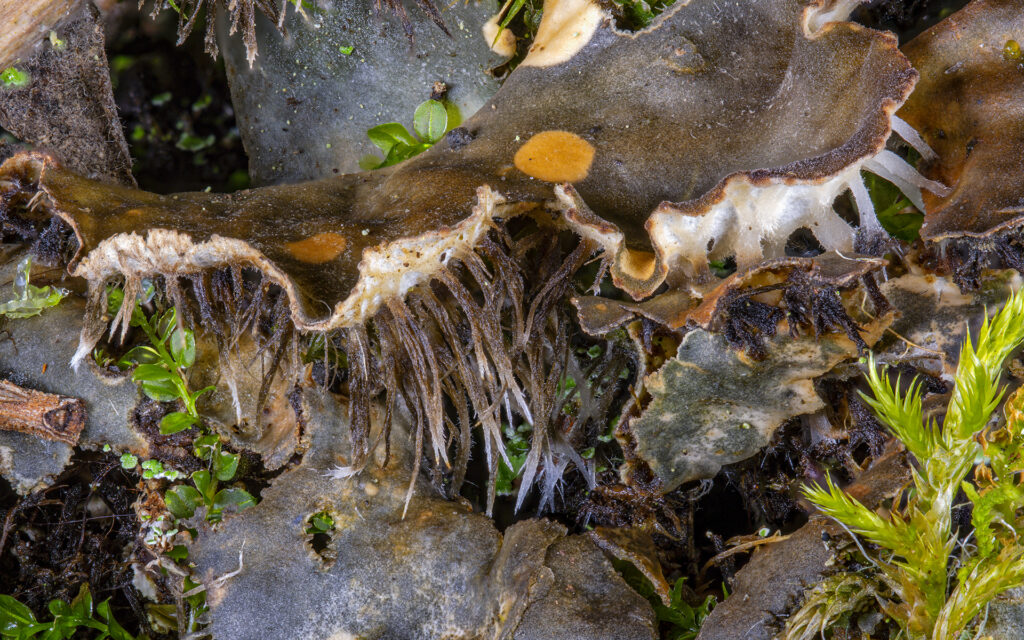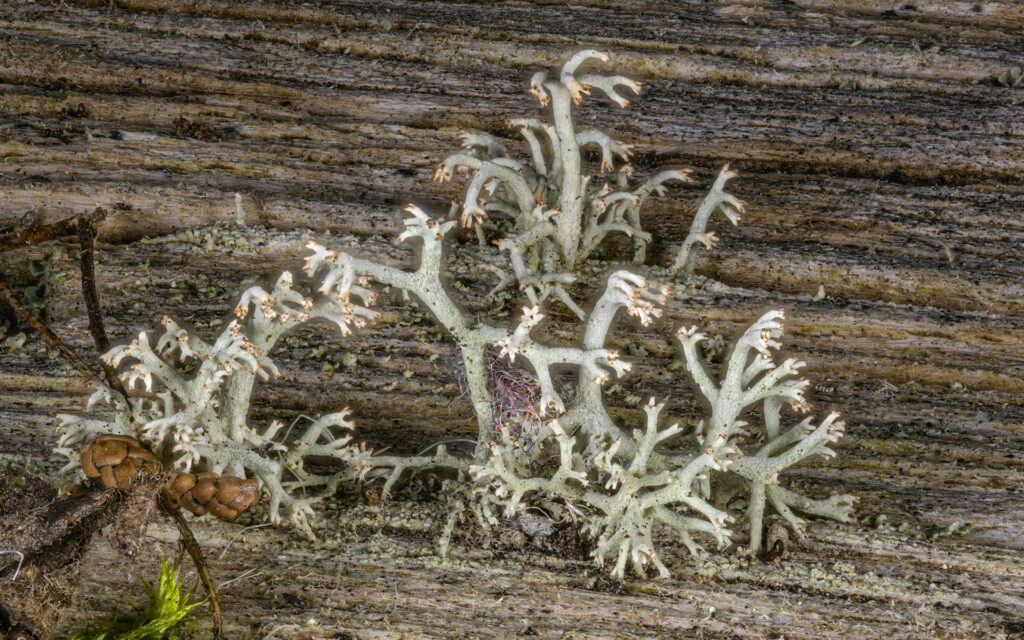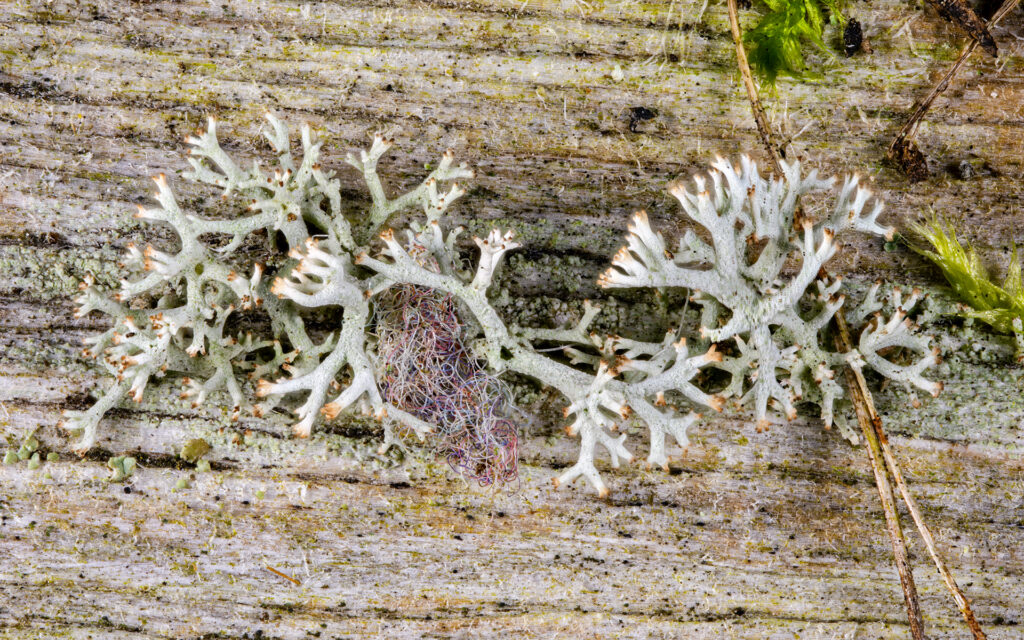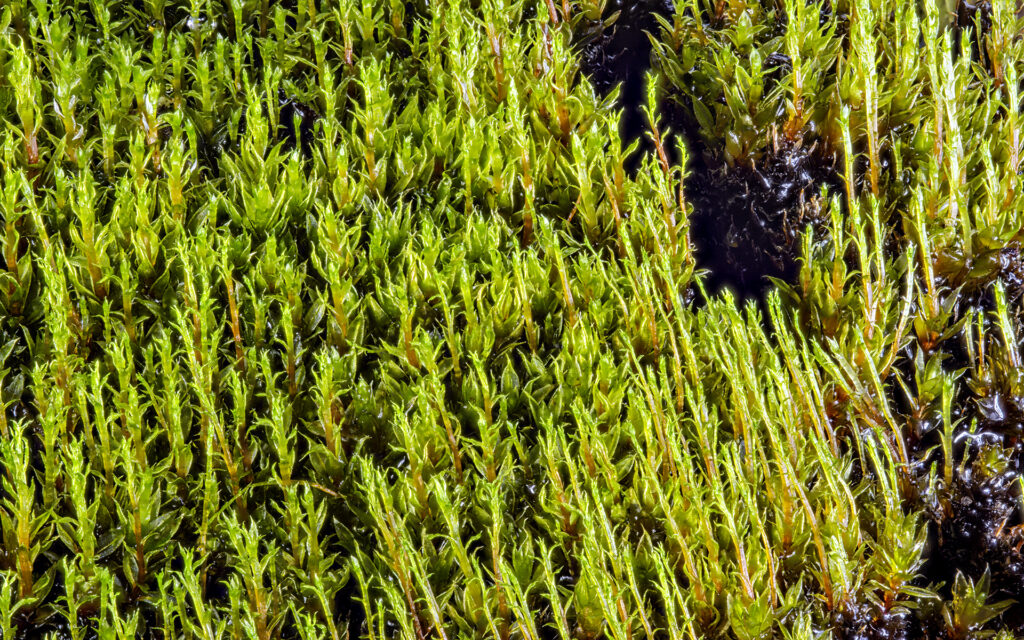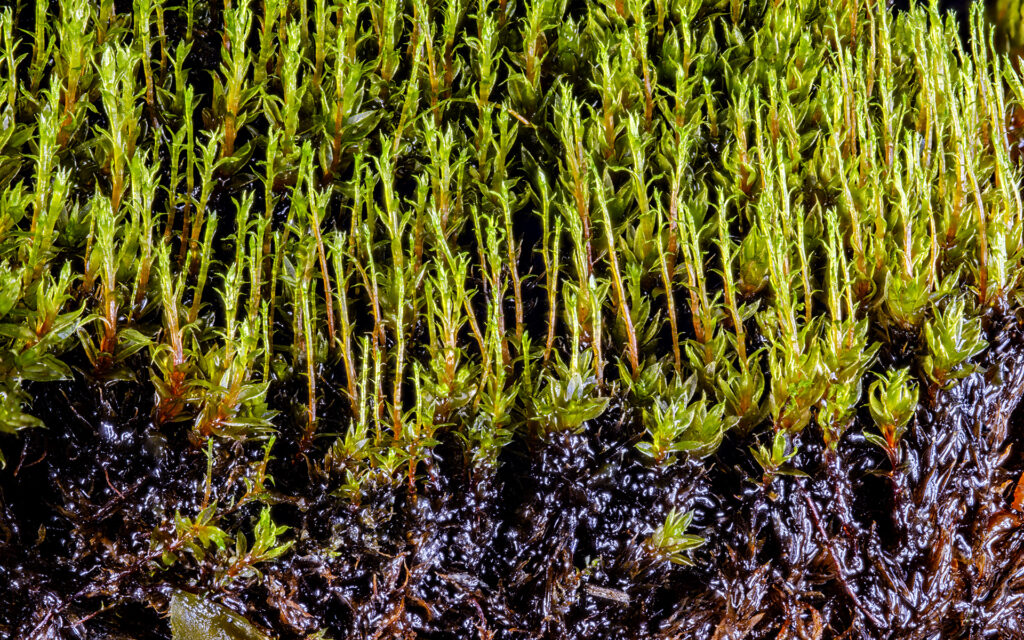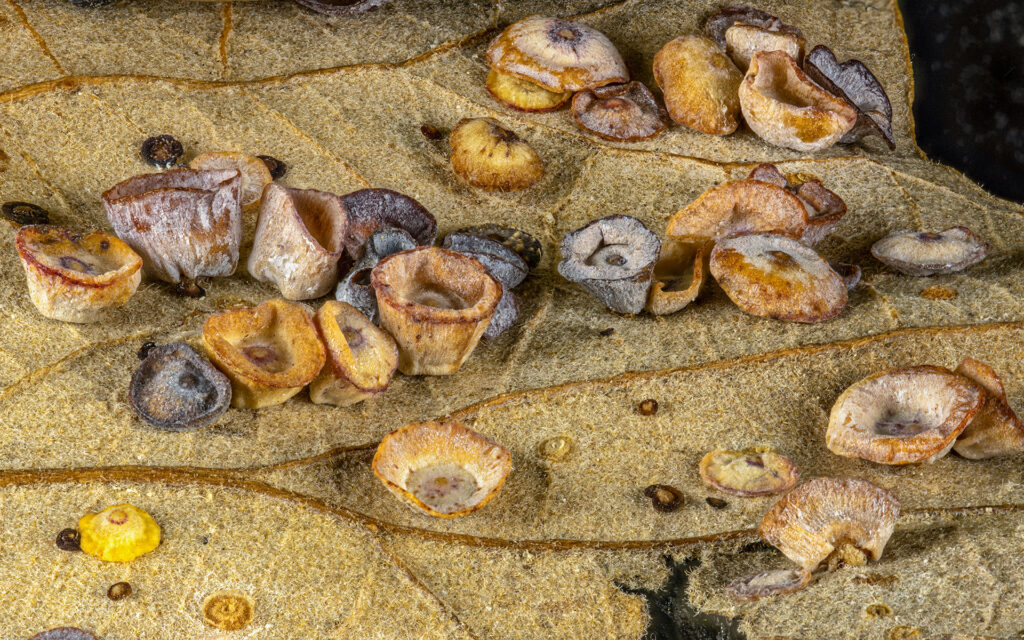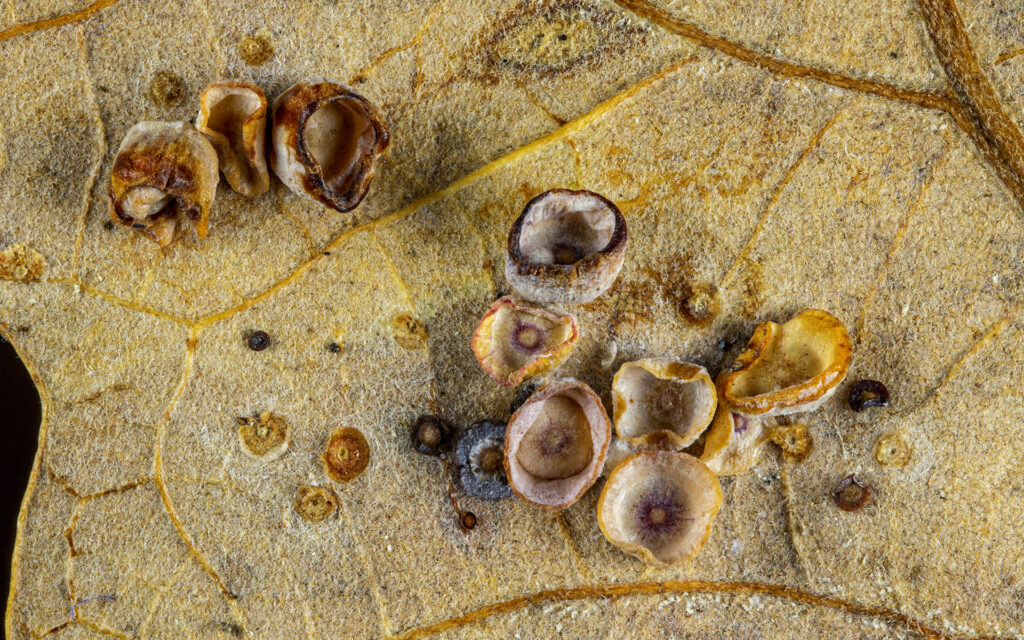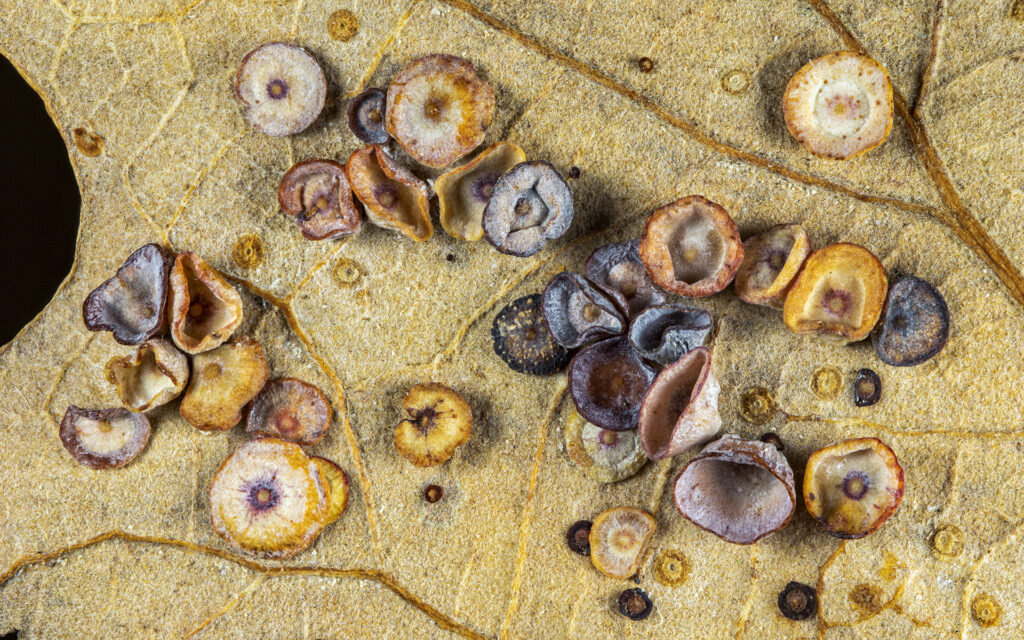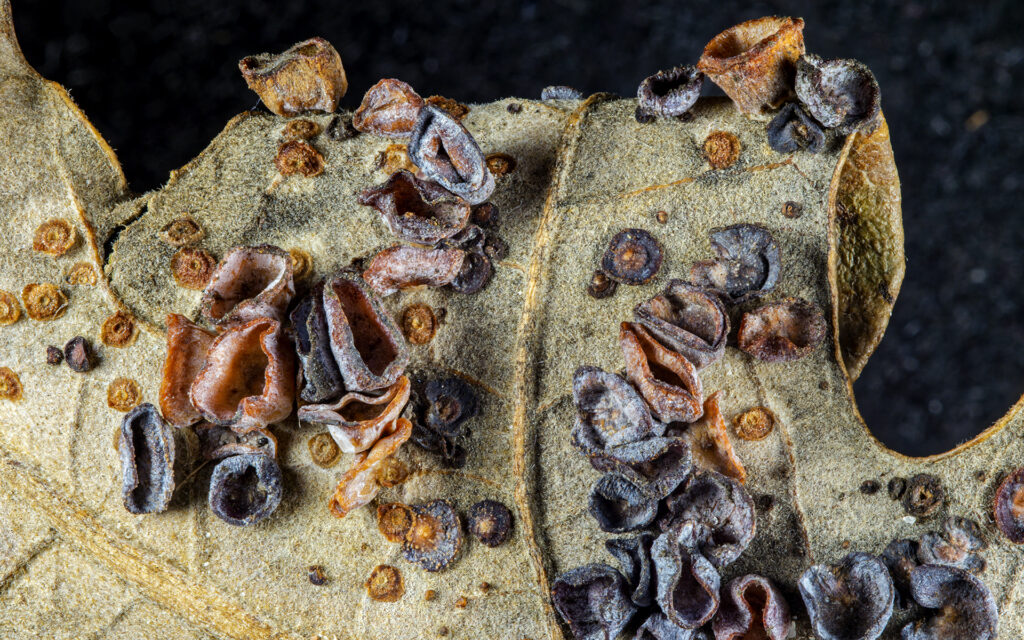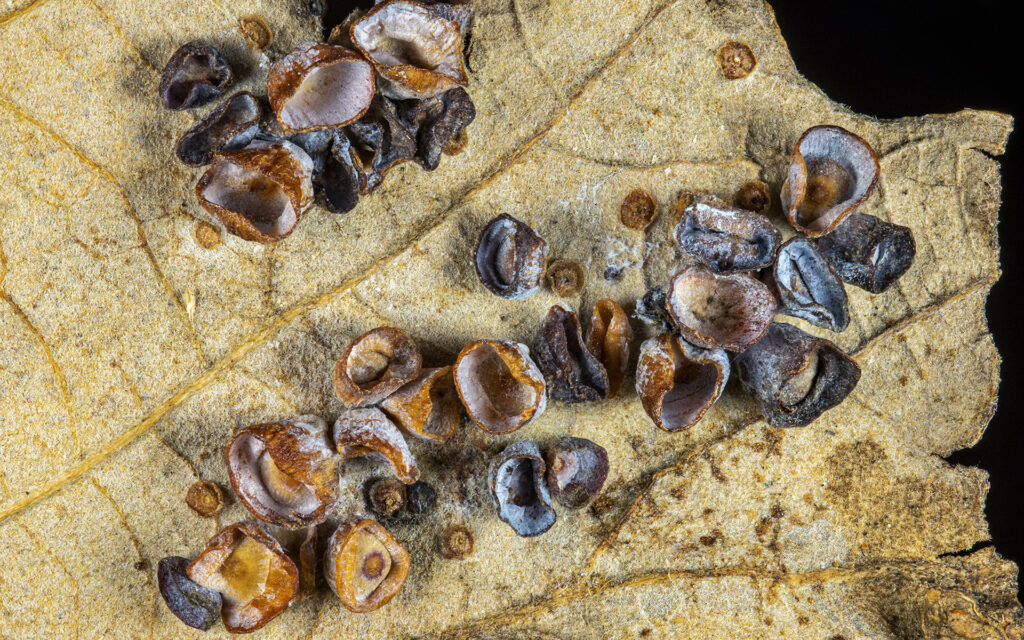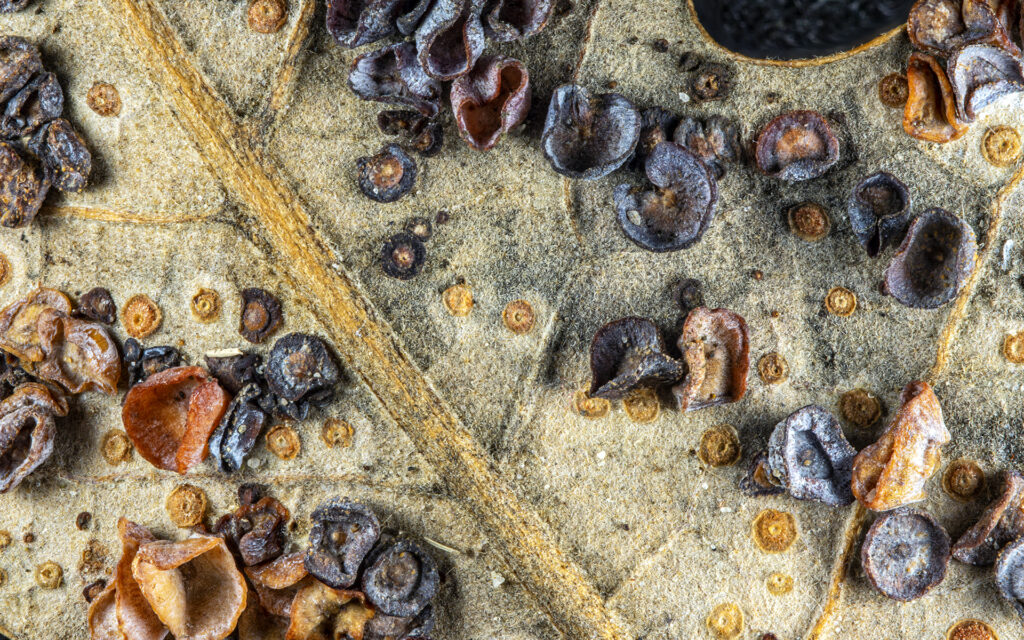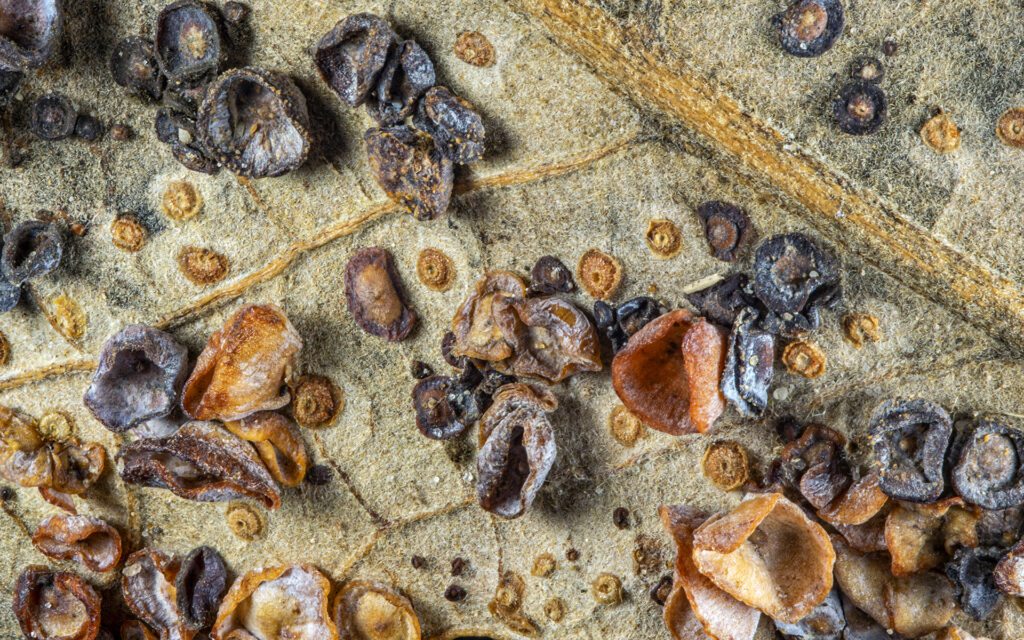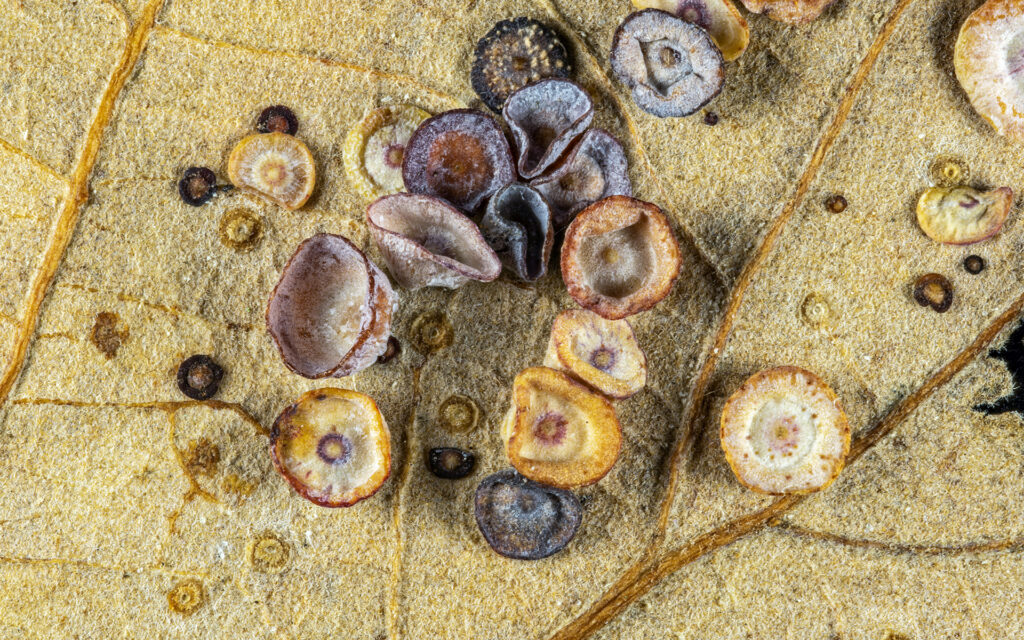Recently I’ve had some difficulty finding subjects. I’m a little obsessed with lichens and they’re easiest to spot this time of year now the vegetation has died back, so I’ve been out collecting what I can find. It’s going to be a long winter.
The first four of this set depict lichens encasing small twigs of sumac. They’re engorged with water from two solid days of rain prior to being collected.
The small examples of reindeer moss starting on wood (last two shots, above), show an unfortunate clump of “microplastics”, although technically these are more “macro” in scale. They would continue to break down to smaller and smaller fragments. I’m not sure what if any impact they have on the lichens, but it can’t be good. The entire area was strewn with plastic debris. I find microplastics on the majority of my subjects, plants, insects, fungi, it doesn’t matter. Plastic pollution has become entirely pervasive. The true scope of this catastrophe has yet to be widely accepted.
Below are a couple of stacks depicting a fine leaved moss I found growing nearby. The fine, spindly growth is a result of insufficient LED lighting for the past few days, but the extraordinary thing is that this clump of moss has been sitting neglected in my windowsill for more than a year, bone dry. I gave it a little water to soak in and a quick spritz and put it under a lamp for a couple of days prior to shooting it. These organisms like lichens and mosses that can become dry and dormant for extended periods of time seem to blur the definitions of life and death. Was this moss alive prior to receiving water? What is the difference between dormancy and death if the water never comes?
The set below features “Oak Button Galls”. They’re small structures caused on the leaves of white oak trees by tiny parasitic wasps. The wasp lays its egg in the leaf and it deforms a portion of the leaf into a protective structure for the larva to develop within. They manipulate the genetics of the host plant to create their temporary homes. The galls change colour after the wasp ecloses, and eventually fall off the leaf leaving a tiny button-like structure in its place. I find the variety of colours among the leaf galls to be appealing, and I intend to pay more attention to growths like this next season.
